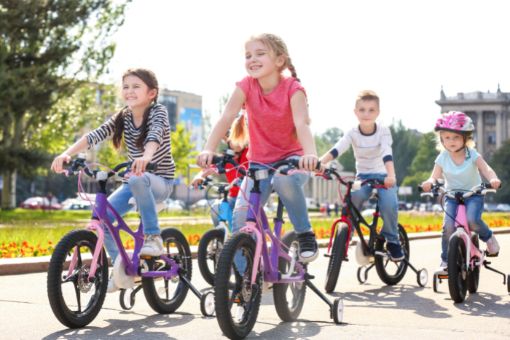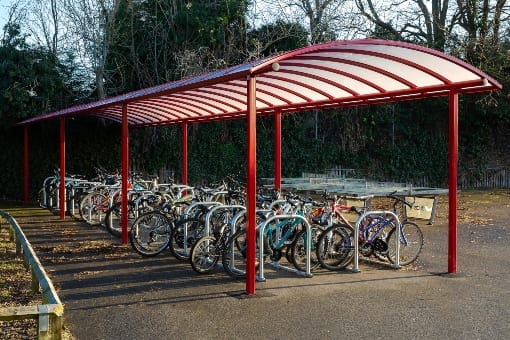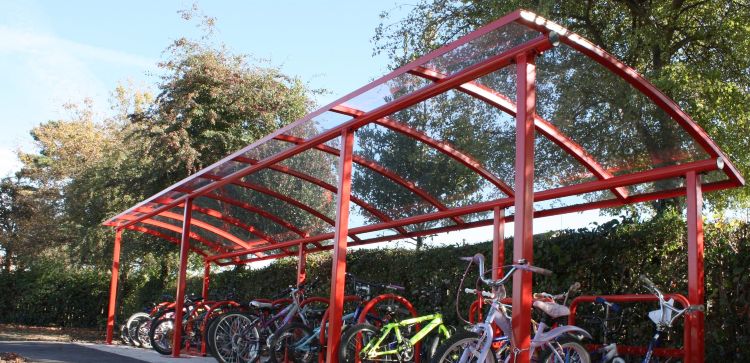According to new data, fewer children are getting on their bikes and cycling, with 36% of all primary school pupils (1.6 million children) not cycling at all in 2021.
The study, performed by cycling manufacturer Raleigh, also revealed that school children living in cities were the least likely to have used a bike, with 49% in London not even riding a bike in the past 12 months.
What are the advantages of cycling to school?
 Cycling has several physiological advantages for children, but it also aids in mental health improvement. The NHS recommends that all children participate in at least 60 minutes of physical exercise every day. Cycling is a great way for kids to get the exercise they need, as it not only keeps them healthy but also provides them with many additional benefits.
Cycling has several physiological advantages for children, but it also aids in mental health improvement. The NHS recommends that all children participate in at least 60 minutes of physical exercise every day. Cycling is a great way for kids to get the exercise they need, as it not only keeps them healthy but also provides them with many additional benefits.
- Cycling encourages self-sufficiency and develops confidence in young children
- As a result of the active start to the day, kids will be more attentive in class
- It’s a low impact exercise that helps burn calories and improve health overall
- It improves fine motor skills
- It is better for the environment and a great opportunity for children to learn about environmental issues. This teaches kids the value of environmental care while also instilling a sense of responsibility.
Whether you’re rushing for the school run, or for work, morning routines can be stressful. Cycling to school is the perfect incentive for children to be ready for the start of the day on time. With a huge rise in petrol and diesel currently, cycling is the perfect alternative – it saves on fuel costs and you can avoid the morning traffic. Plus, it’s much kinder to the environment!
How can schools encourage cycling to school?
With so many health benefits both physical and mental, an increasing number of schools are now seeing the importance of cycling to school. However, there are several concerns raised by parents such as road safety or lack of confidence in their child’s cycling abilities. Children are also apprehensive about carrying large school bags, cycling in adverse weather, or where they can store their bikes when they get to school.
Below are some ways that schools can encourage cycling to school and alleviate some of the concerns raised by both parents and children:
-
Add safety measures
Safety problems must be addressed since fear of traffic is one of the most significant barriers to cycling. It’s therefore critical that children have access to safe cycling paths. Some ways to enforce a safe cycling school journey are:
- Exclusion zones: during school drop-off and pick-up periods, restrict motorised traffic from using roads in front of schools.
- Cycling lessons: teach children how to ride a bike and how to be safe on the road, which is already required in many European schools. A good curriculum example is the Bikeability
-
Get parents onboard
It’s always important to have the parents on board, particularly with primary school children who have less independence when it comes to their journey to school. Cycling needs to be a viable alternative for guardians to do this. Here are some ideas to incentivise them:
- Park and cycle: as part of the STARS programme, parents and guardians in cars are dropped off at certain locations, allowing children to walk or ride the remainder of the way with the assistance of a school warden.
- Maps: provide a map of the safest and simplest cycling paths to school.
- School letters: through letters sent home from school, enhance awareness of the pollution, costs and advantages of cycling.
- Pool bikes: establish a bike-lending programme for children without bicycles, based on community donations, guardians, and bike shops.
-
Set an example
Teachers have a tremendous impact on young people. Seeing teachers cycling to school is an important factor in encouraging students to do the same. Here are some ideas on how teachers and schools can help kids develop a cycling perspective:
- Bike clubs: some schools have bike polo or BMX groups after school to encourage cycling as a recreational activity.
- Teacher ambassadors: a group of committed teachers who are qualified cycling ambassadors that can help the school develop a cycling culture.
-
Cycle storage
 To successfully encourage cycling to school, a safe and secure bike storage facility needs to be available at schools. This will give parents and children peace of mind that their precious bikes and scooters are safely stored away.
To successfully encourage cycling to school, a safe and secure bike storage facility needs to be available at schools. This will give parents and children peace of mind that their precious bikes and scooters are safely stored away.
Our bespoke designs can be installed with a variety of colour schemes to match your school’s emblem. Durable, attractive, and good value, our cycle storage is a truly inviting place to park your bike – offering safety and security from all weather conditions.
The sheer enjoyment of cycling, as well as the health advantages it can provide, should be encouraged and available to everybody, especially children. For more information and details here are some cycle storage projects we’ve successfully delivered for several schools across the UK.


